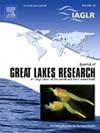Integrated water quality assessment of open water bodies using empirical equations and remote sensing techniques in Bangweulu Wetland lakes, Zambia
IF 2.4
3区 环境科学与生态学
Q3 ENVIRONMENTAL SCIENCES
引用次数: 0
Abstract
Water quality assessment is essential for conserving aquatic ecosystems and human consumption. However, monitoring several water quality parameters in open water bodies poses significant challenges, resulting in gaps and limitations. While the Water Quality Index (WQI) integrates various water quality parameters, its spatial application has not yet been thoroughly evaluated. To address these issues, this study was conducted to establish an integrated remote sensing approach for comprehensive monitoring of water quality. Utilising Sentinel 2 data alongside on-site/lab water quality measurements, various relationships were established. The calculated mean WQI from on-site/lab data was 35, while from remotely sensed data was 41. Linear relationships (R2) between WQI and various water quality parameters such as chloride (0.712), sodium (0.705), TDS (0.705), turbidity (0.628), and EC (0.704) were observed. These relationships facilitated the transformation of water quality parameter maps into WQI maps, the WQI maps were then integrated into one WQI map showing the overall water quality status of the Bangweulu Wetland lakes. Both on-site/lab and remote sensing methods indicated that the concentrations of water quality parameters in the Bangweulu Wetland lakes is lower (better) than the local and international recommended limits, with a calculated WQI falling within the ’Good’ category. This indicates that the water is fresh, clean, and suitable for various purposes including ecological preservation, agriculture, aquaculture, recreation, industrial use, and human consumption. The findings offer insights into the general status of water quality in open water bodies, identifying hot spots and potential sources of water pollution with implications for future management practices.
基于经验方程和遥感技术的赞比亚Bangweulu湿地湖泊开放水体水质综合评价
水质评价对保护水生生态系统和人类消费至关重要。然而,在开放水体中监测一些水质参数带来了巨大的挑战,导致了差距和局限性。虽然水质指数(WQI)综合了各种水质参数,但其空间应用尚未得到充分评价。为了解决这些问题,本研究建立了一种综合遥感水质监测方法。利用哨兵2号数据和现场/实验室水质测量数据,建立了各种关系。现场/实验室数据计算的平均WQI为35,而遥感数据计算的平均WQI为41。WQI与氯离子(0.712)、钠离子(0.705)、TDS(0.705)、浊度(0.628)、EC(0.704)等水质参数呈线性关系(R2)。这些关系有助于将水质参数图转化为WQI图,然后将WQI图整合成一张WQI图,显示邦韦鲁湿地湖泊的整体水质状况。现场/实验室和遥感方法均表明,Bangweulu湿地湖泊的水质参数浓度低于当地和国际推荐的限值(较好),计算出的WQI属于“良好”类别。这表明水是新鲜的,干净的,适合各种用途,包括生态保护,农业,水产养殖,娱乐,工业用途和人类消费。研究结果提供了对开放水体水质总体状况的见解,确定了热点和潜在的水污染来源,并对未来的管理实践产生了影响。
本文章由计算机程序翻译,如有差异,请以英文原文为准。
求助全文
约1分钟内获得全文
求助全文
来源期刊

Journal of Great Lakes Research
生物-海洋与淡水生物学
CiteScore
5.10
自引率
13.60%
发文量
178
审稿时长
6 months
期刊介绍:
Published six times per year, the Journal of Great Lakes Research is multidisciplinary in its coverage, publishing manuscripts on a wide range of theoretical and applied topics in the natural science fields of biology, chemistry, physics, geology, as well as social sciences of the large lakes of the world and their watersheds. Large lakes generally are considered as those lakes which have a mean surface area of >500 km2 (see Herdendorf, C.E. 1982. Large lakes of the world. J. Great Lakes Res. 8:379-412, for examples), although smaller lakes may be considered, especially if they are very deep. We also welcome contributions on saline lakes and research on estuarine waters where the results have application to large lakes.
 求助内容:
求助内容: 应助结果提醒方式:
应助结果提醒方式:


